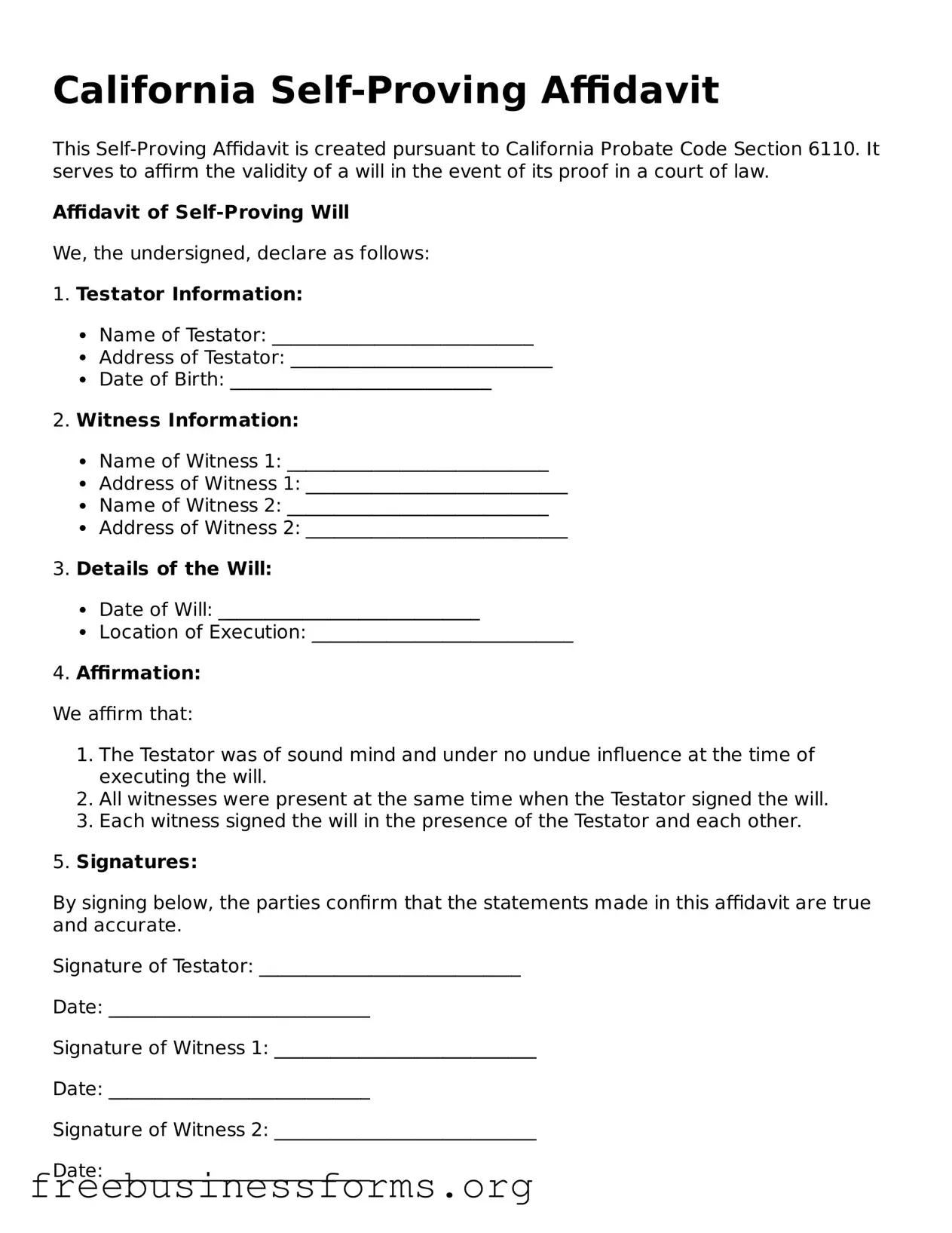California Self-Proving Affidavit
This Self-Proving Affidavit is created pursuant to California Probate Code Section 6110. It serves to affirm the validity of a will in the event of its proof in a court of law.
Affidavit of Self-Proving Will
We, the undersigned, declare as follows:
1. Testator Information:
- Name of Testator: ____________________________
- Address of Testator: ____________________________
- Date of Birth: ____________________________
2. Witness Information:
- Name of Witness 1: ____________________________
- Address of Witness 1: ____________________________
- Name of Witness 2: ____________________________
- Address of Witness 2: ____________________________
3. Details of the Will:
- Date of Will: ____________________________
- Location of Execution: ____________________________
4. Affirmation:
We affirm that:
- The Testator was of sound mind and under no undue influence at the time of executing the will.
- All witnesses were present at the same time when the Testator signed the will.
- Each witness signed the will in the presence of the Testator and each other.
5. Signatures:
By signing below, the parties confirm that the statements made in this affidavit are true and accurate.
Signature of Testator: ____________________________
Date: ____________________________
Signature of Witness 1: ____________________________
Date: ____________________________
Signature of Witness 2: ____________________________
Date: ____________________________
Notary Public:
Subscribed and sworn to before me, this ____ day of ____________, 20__.
Signature of Notary Public: ____________________________
My Commission Expires: ____________________________
